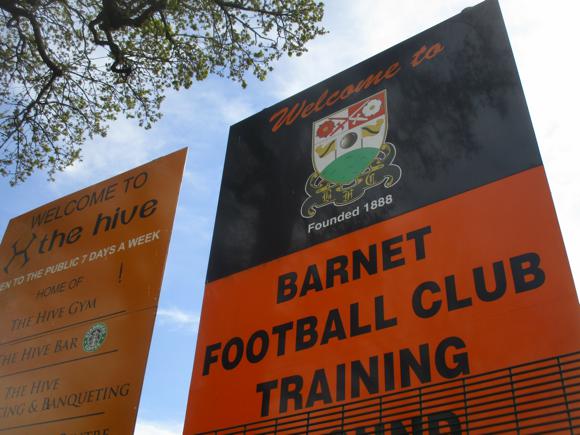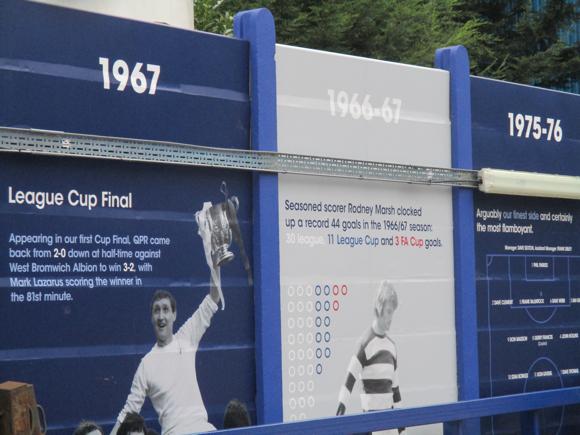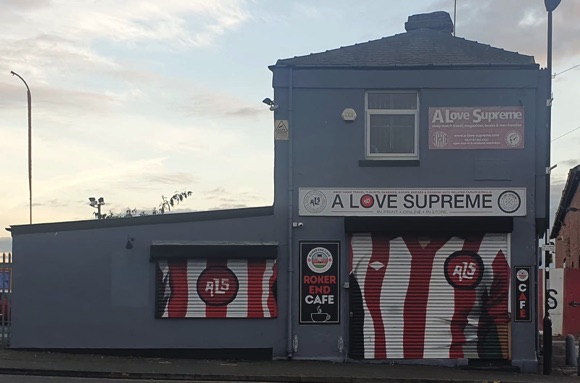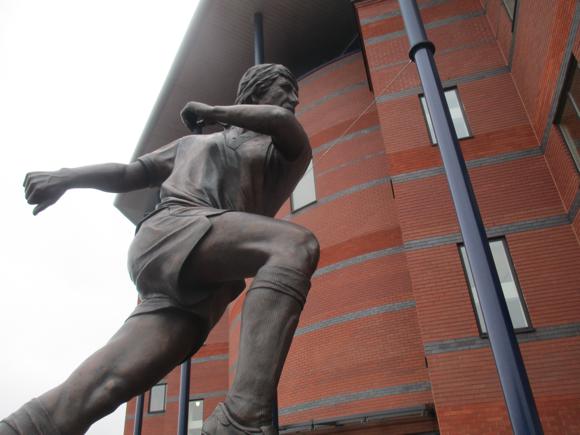A fan’s guide – the club from early doors to today
Everton echo longevity and tradition. The team still walk out to the theme from Z-Cars, the Beatles-era TV show set in a fictional community near Liverpool. Paul McCartney himself went to the 1966 FA Cup Final to cheer on his local favourites at Wembley. Original founding members of the Football League in 1888, the Toffees have competed in the top flight for more seasons than any other club. These 100-plus campaigns have so far generated nine titles.
While a tenth seems a very long way off, in 2021 the club was given the green light to build a new stadium at Bramley-Moore Dock. Two miles west of Goodison Park, the club’s venerable home since 1892, this waterfront development will cost an estimated £750 million, part of it pledged by spendthrift Everton owner, Iranian billionaire Farhad Moshiri.
While Moshiri eventually sold the club to Roma owner, Texas billionaire Dan Friedkin, in December 2024, fans were looking forward to a sense of stability – Everton were docked eight points in two separate punishments in 2023-24 – and a new home by the Mersey.





The first trial fixtures at Bramley-Moore Dock take place in the late winter and early spring of 2025, though the club won’t move in until the 2025-26 season. Capacity is 52,888, 13,000 more than Goodison, but behind the scenes, Everton are in a deep financial hole. The new owners had to find several million to cover the club’s debts, involving loans made by previous bidders lured by the same carrot of a new arena.
Meanwhile, the new stadium has been selected to co-host Euro 2028, ahead of Anfield, much as Goodison staged some of the most memorable games of the 1966 World Cup including Hungary’s 3-1 win over Brazil and Portugal’s 5-3 comeback against North Korea.
Having broken Preston’s grip on the Football League in 1891, Everton vacated Anfield for Goodison. Their nickname, the Toffees, dates from this time, after a nearby sweet-shop owner used to throw them to the crowd. The store has gone but the ritual remains. Even Everton mints are linked to Victorian-era football, their colour matching the club’s original black-and-white before the switch to blue soon afterwards.





On the pitch, the first hero was Dixie Dean, a prolific striker from Tranmere, who set a league record 60 title-winning goals in 1928. His statue stands outside the ground. Pre-war, the Blues notched five championships, but would not win a sixth until Harry Catterick took over as manager in the 1960s.
A forward duo of Welsh international Roy Vernon and his Scottish strike partner Alex Young led the Toffees to the title in 1963, followed by an FA Cup win in 1966, Everton reversing a 2-0 deficit to overcome Sheffield Wednesday 3-2.
The defensive spine of goalkeeper Gordon West and centre-back captain Brian Labone, considered the greatest Evertonian alongside Dixie Dean, remained solid throughout the decade. In front of them, Catterick put together one of the greatest midfields in the post-war game. At 17, Howard Kendall had been the youngest player to grace an FA Cup final, on the losing side for Preston in 1964.





A few months before, Colin Harvey had made his Everton debut at 18 – thrown into the lion’s den of the San Siro. Alan Ball staked his place on football’s biggest stage by his man-of-the-match performance for England at the 1966 World Cup Final. He was then 21, and soon moved from Blackpool to Everton.
This threesome, the so-called Holy Trinity, saw off an almighty challenge from Don Revie’s relentless Leeds machine to win a memorable title in 1969-70. Their statue now stands alongside Goodison.
Fate then conspired against Everton piling up more silverware. A shock defeat on away goals to unfancied Panathinaikos ended hopes in the European Cup, before Alan Ball was inexplicably sold to Arsenal. Soon afterwards, Harry Catterick suffered a heart attack from which he never truly recovered.





Howard Kendall would return to Goodison in 1981, first as player-manager, his astute signings creating perhaps Everton’s greatest ever side. Welsh goalkeeper Neville Southall had impressed for Bury – in the Fourth Division. Tireless midfielder Peter Reid cost £60,000 from Bolton, winger Trevor Steven was a 19 year old from Burnley. Kendall nurtured home-grown Gary Stevens to be a full-back later to win 46 England caps. Add a brave Andy Gray up front, and Everton all but superseded all-conquering Liverpool.
Two titles were won in three seasons as the Football League became a neck-and-neck race between the Merseyside rivals, also opponents in two FA Cup finals. European silverware in the shape of the Cup-Winners’ Cup also graced the Goodison trophy cabinet but the 3-1 win over Rapid Vienna came a fortnight before the fateful European Cup final between Liverpool and Juventus.
With English clubs banned from Europe post-Heysel, Kendall and his stars drifted away, the manager to Spain, Steven and Stevens to Scotland.


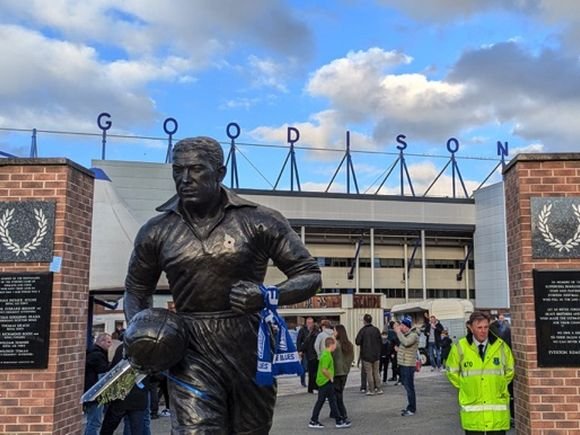
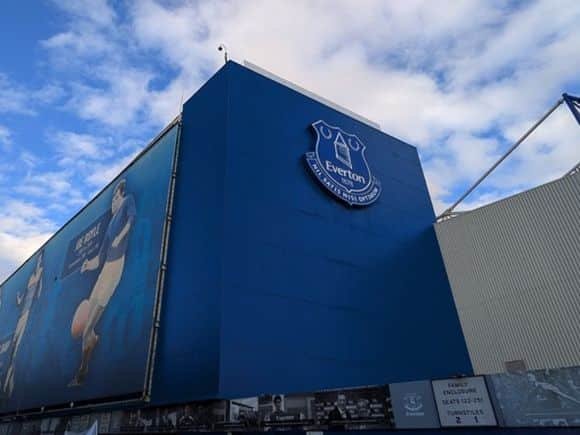

Everton trod water with occasional flourishes until 1970 old boy Joe Royle secured the status of bullish striker Duncan Ferguson, won an unexpected FA Cup in 1995 thanks to goalkeeping heroics by Neville Southall and brought in tricky winger Andrei Kanchelskis. Europe beckoned before a tightening of the purse strings discouraged Royle from building long-term.
More poor decisions in the boardroom then ended Howard Kendall’s third sojourn at Goodison, and the early promise shown by Walter Smith.
When relegation threatened in 2002, David Moyes stepped in to steady the ship. The man who first managed Wayne Rooney took Everton to an FA Cup final, and brought good league form from the likes of Tim Cahill, Steven Pienaar and Marouane Fellaini.
With theatre producer and life-long Evertonian Bill Kenwright now chairman, the future seemed bright at EFC, the Blues even overcoming the inevitable sale of Wayne Rooney to Manchester United. Four European campaigns were notched up in five seasons although, crucially, the Champions League group stage proved elusive.





Moyes having taken Everton as far as they could go as the richer clubs pulled away, he made the move to Manchester United, taking Fellaini with him. Roberto Martínez stepped in for 2013-14. High-scoring full-back Leighton Baines remained, as did young prodigy Ross Barkley. Gareth Barry and Romelu Lukaku. Everton’s 2-0 win over Moyes’ United led to their ex-manager to be sacked from Old Trafford.
Despite the arrival of a new major shareholder in Farhad Moshiri, the return of Wayne Rooney and a string of promising managers – Ronald Koeman, Sam Allardyce, Marco Silva – Everton still failed to break into the top six by season’s end. Much was also expected from the arrival of Carlo Ancelotti in 2019 and World Cup star James Rodríguez in 2020 but European football still proved a rung too high.
The hiring of former Liverpool boss Rafa Benítez in 2022 ruffled a few feathers, the naysayers vindicated by a dreadful run that autumn and his subsequent replacement by Frank Lampard. Relegation loomed before an epic second-half turnaround against Crystal Palace transformed a 0-2 scoreline into a lifesaving 3-2 win and a frenzied pitch invasion.





On the other side of Europe, the war in Ukraine had a jarring effect on Everton’s already precarious finances. With Moshiri’s benefactor and former business partner, Uzbek-Russian industrialist Alisher Usmanov unable to operate in the UK, his considerable backing of Everton had to be withdrawn.
Keen to offload the club into which he had poured £750 million since 2016, Moshiri not only entered long negotiations with potential new owners but had them provide emergency loans to keep Everton (and the stadium construction) going – by now, major banks were unwilling to do so.
Matters came to a head in 2023, by which time Frank Lampard was yet another manager to be sacked and in need of significant compensation. Transgressing Profit & Sustainability Rules (PSR) by nearly £20 million, Everton were docked ten league points, later reduced to six on appeal. Another two were then added in a separate ruling.
While the backs-against-the-wall situation steeled the team under results-driven manager Sean Dyche, Everton’s financial situation remained dire.





Forced to sell talent such as Everton academy graduate Anthony Gordon to Newcastle and dispatch acclaimed centre-back Jarrad Branthwaite to PSV Eindhoven on loan, both due to earn England caps in 2024, the club has not yet managed to dent the huge hole in its balance sheet.
Unwise player and manager acquisitions under Moshiri since 2016 contrast sharply with the previous 14 years of calm and relative progress under David Moyes and Roberto Martínez.
While the move to Bramley-Moore Dock cannot come quick enough, there’s no guarantee that the club won’t suffer further points deductions as punishment for their cavalier approach to debt.
It’s one thing to leave your home ground after 133 years, it’s another to bow out of the top tier after seven consecutive decades. In January 2025, incoming US owners the Friedkin Group made a statement of intent by sacking Sean Dyche hours before a cup game with Peterborough, as Everton hovered perilously close to the drop zone in the league.
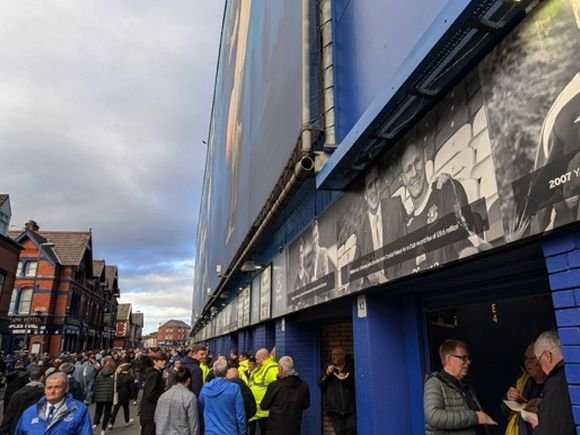






Ground Guide
The field of dreams – and the story behind it








A stage for the 1966 World Cup of Eusébio lore, Goodison Park is a venue of many firsts. Most notably, this 39,500-capacity ground was England’s first purpose-built football stadium of any size. It was also the first to be tiered, and the first to install under-soil heating. It has also, perhaps more remarkably, hosted more top-flight league games than any other ground.
And it will also soon be consigned to history after 133 years, Everton moving to Bramley-Moore Dock in 2025-26. For the time being, though, Evertonians still gather here, in the shadow of signature St Luke’s Church on one corner of the Main Stand.
With the notable exception of the Park End, built in 1994 and with a scoreboard on its roof, parts of Goodison fairly resemble how they would have had done to the Portuguese, Brazilian and North Korean players who graced it back in ’66.

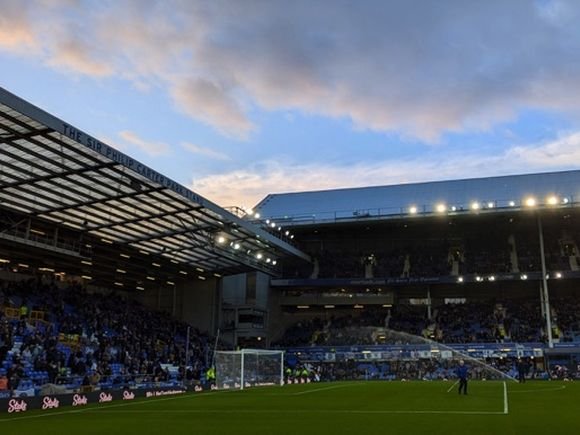



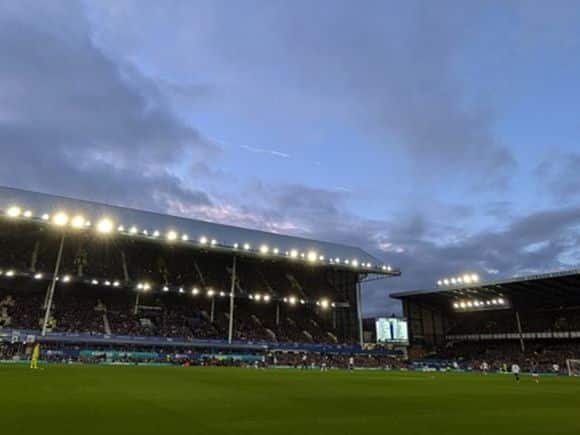


Back then, each end was curved to allow for security space between the crowd and the goal, a unique feature visible on archive shots of many a Eusébio net-buster. Five years later, the £1 million overhaul of the Main Stand created a three-tier edifice the envy of many, overshadowing Anfield across Stanley Park, visible from the so-called Top Balcony.
Facing it on the other sideline is the Bullens Road Stand, where away fans are allocated a section abutting the Park End Stand behind one goal. While the atmosphere in this old-school football temple cannot be denied, few visiting supporters will miss having to make out the action from their seat at the back of the Bullens Road Stand.
The home end is along Gwladys Street, the stand named after Howard Kendall in 2016. Squeezed in by a primary school of the same name and a row of terraced houses dating back to the club’s foundation, its limitations indicate why a new-build was eventually chosen over a Goodison rebuild.








From the stadium’s mandatory conversion to all-seater in the early 1990s, it was clear, despite the opening of the Park End, that Goodison required a complete contemporary makeover to match developments at top grounds elsewhere, or become history. For 20 years, sites were considered and rejected as the club’s finances dwindled.
It was in 2016, and the arrival of owner Farhad Moshiri, that the ball started rolling in earnest. Two years later, the first plans were revealed for Bramley-Moore Dock, until then integral to Liverpool’s status as a UNESCO World Heritage Site..
Though a lucrative deal on naming rights would fall through following the restriction on activities by Uzbek-Russian industrialist Alisher Usmanov, construction began in 2021. Much was already in place by early 2024, although the club decided to delay any official opening until the 2025-26 season.






In January 2025, the first fixtures were announced, beginning with a trial run when Everton’s under-18s play here in front of 10,000 in South Stand, equipped with rail seating, in February. Then it’s the turn of the under-21s in late March or early April, played before 25,000, the full capacity of 52,888 to be tested in a friendly game later in the spring or early summer.
Known for the time being as Everton Stadium, the waterside arena saw its first memorial raised in 2024, to construction worker Michael Jones, who suffered a fatal accident while working on the site the year before.
Over at Goodison, plans are in place to knock down the old ground and put up flats, offices, a care home and leisure space in its place following Everton’s last league game there, against Southampton in May 2025.
getting here
Going to the ground – tips and timings

Goodison is served by a frequent Soccerbus service that operates from Sandhills station, two stops on the Merseyrail Northern Line from Liverpool Central.
From Liverpool Lime Street, it’s one stop on the Wirral Line to Liverpool Central, then change. When buying any rail ticket into Liverpool, a Soccerbus pass can be added for £1.90/single, £3.30/return (kids £1/£1.80). Otherwise, the Soccerbus is £2 single, £3.50 return (kids £1/£1.50). The service is also included in the various day pass tickets on sale in the main Queen Square bus terminus.
With long queues after the game, you might want to walk down to Kirkland station, via Spellow Lane, past the Royal Oak pub, down Barlow Lane and straight down Westminster Road. Allow 15mins. It’s one stop beyond Sandhills, so three from Liverpool Central.

Stagecoach runs the match-day 919 from stand 10 on St John’s Lane across from Lime Street station to Goodison. Regular city buses leave from Queen Square opposite, including the 19 (stand 6) to Bullens Road right by Goodison, the 20 and 21 (stand 7) to Ludlow Street – from there, cross the road and head down Eton Street or Winslow Street.
The sat nav code for Goodison is L4 4EL. There is limited parking the other side of Stanley Park, at the corner of Priory Road/Utting Avenue (L4 7UR). Alternatively, there are two council-run Lifestyles sports centres reasonably close, Alsop in Walton Village (L4 6RW) and Walton on Walton Hall Avenue (L4 9XP), with 19 and 170 parking spaces respectively. Each is about a 10-15min walk from Goodison.
getting in
Buying tickets – when, where, how and how much



With average attendances close to capacity and 31,000-plus season-ticket holders, availability has always been an issue at Everton. This situation should change come August 2025, when the club moves to a new stadium with some 13,000 more seats.
The club’s membership scheme (£35) offers priority for the season-ticket waiting list but not for match tickets. The first port of call should be online sales. Season-ticket holders also use the resale platform for games they cannot attend. Note that ticket-and-hotel deals through Sporting Breaks have sold out for 2024-25, and the club’s hospitality packages have sold out for 2025-26.
The ticket office (Mon-Fri 9am-5pm, 0151 556 1878) is opposite the Wilmslow Hotel on Goodison Road, and distributes during the week of the match if there is availability for less attractive league fixtures and earlier rounds of either cup.
Matches are divided into two categories, A and B, prices ranging from £40-£50 between the cheapest Howard Kendall Gwladys Street End and Main Stand. Seniors (over-65s) pay around £25-£30, under-16s £20-£25. Away fans in the upper tier of the Bullens Stand pay £30, over-65s £21, under-18s £16.
For details on availability, contact the club by email (servicedesk@evertonfc.com) and through the website.
what to buy
Shirts, kits, merchandise and gifts







Everton One (Mon-Fri 9.30am-5.30pm, Sat 9am-6pm, Sun 10am-4pm, extended hours on match days) is opposite the stadium at the corner of Walton and Spellow Lanes. Alongside the customary team strip and training-kit options, are novelty items such as Everton toffees in branded jars and models of Goodison.
Second-choice tops for 2024-25 are black with bright yellow collars and logos, third kits white with blue-and yellow collars and cuffs. A line in retro shirts is also available, mainly from the NEC-sponsored era. The range of merch stretches to oven gloves, travel neck pillows and golf umbrellas.
City-centre Everton Two (11 South John Street) has longer opening hours of Mon-Fri 10am-8pm, Sat 10am-7pm, Sun 11am-5pm.
stadium tours
Explore the ground inside and out






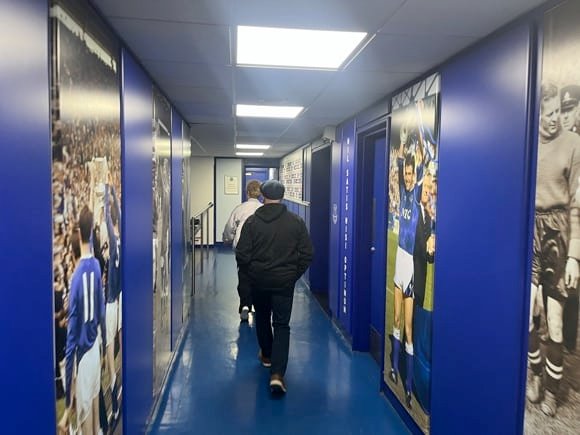
Stadium tours (£23.50, over-65s/16-21s £20, 4-15s £15, under-4s free) can be booked through the club website – check for available slots on 0151 556 1878. Tours last around 60-80mins and take in all areas of Goodison – you even walk out down the tunnel to the tune of Z-Cars.
There is no club museum as such, but the permanent football exhibition at the Museum of Liverpool at Pier Head near the city centre should provide plenty of background on the enduring and endearing city rivalry with Liverpool.
Where to Drink
Pre-match beers for fans and casual visitors









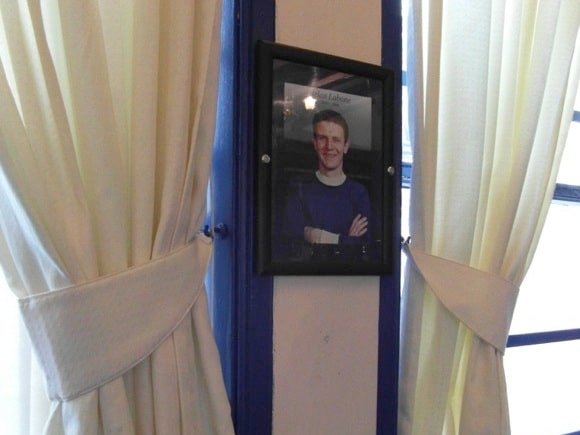






Along Wilton Road, pubs generally welcome home and away fans, the biggest being The Thomas Frost, a spacious Wetherspoons with all the usual drinks promotions and meal deals. Alongside, The Clock is pretty basic but usually quiet, St Hilda the friendly bar of a handy B&B. On the corner of Spellow Lane, The Royal Oak displays Everton history around the walls of a revered local.
Goodison Road and Park stand at the other end of Spellow Lane, where The Winslow Hotel is steeped in Everton history. Opened in 1886 before EFC set up at Goodison, this large establishment was overhauled by a team of Blues fans and now only opens on match days and for special functions.
Further down Goodison Road, The Spellow has also been revived, another dyed-in-the-wool Blues boozer with a range of framed prints and stories from down the ages on display around its back room. For eats, a few buildings along, the Goodison Cafe serves standard favourites.
What will happen to these pubs and bars after Goodison closes isn’t yet clear – in an ideal world, The Winslow Hotel would host Everton-themed events for many years to come.




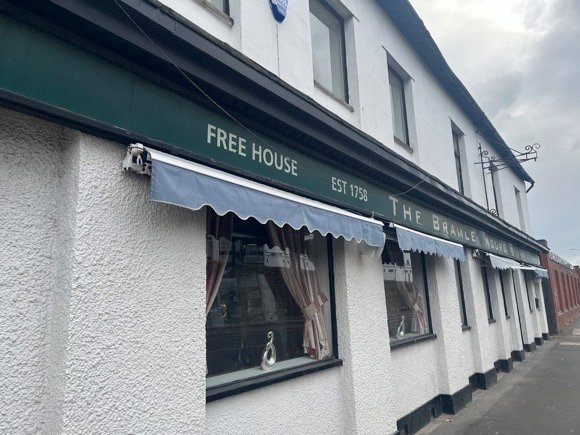
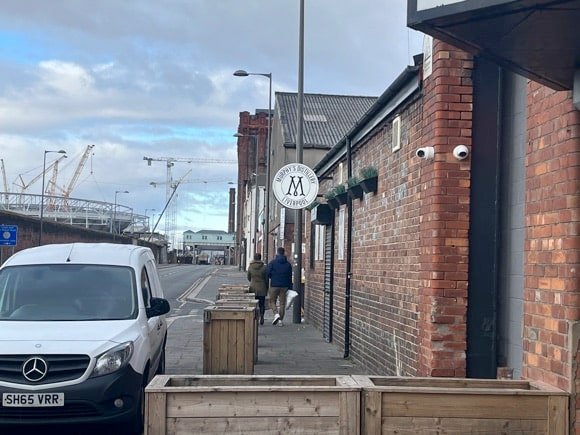


Over at Bramley-Moore Dock, The Bramley Moore (‘Est 1758’), one of the original waterside pubs, has long been an Everton favourite even without a new stadium slap opposite. Quieter afternoons here allow for a game of pool or darts, with big-screen sport in the background. Match days here should be mobbed.
Further down Regent Road parallel to the Mersey, Murphy’s Gin operates as both a distillery and a bar, usually open Friday nights and from lunchtimes on Saturdays and Sundays, but these hours may change once the new stadium opens. Whether the management wants hordes of football fans tramping through the place on match days is open to question.
Next door, Ten Streets Social serves top breakfasts, quality mains and write-home-about Sunday roasts, as well as fine wines and £10 cocktails, in trendy, urban, bare-brick surroundings. Again, probably not the stuff of match days but there are worse ways to gear up for kick-off than the house special mixed drink of spiced rum, Chambord, orange, lime and cranberry, expertly concocted and presented.










